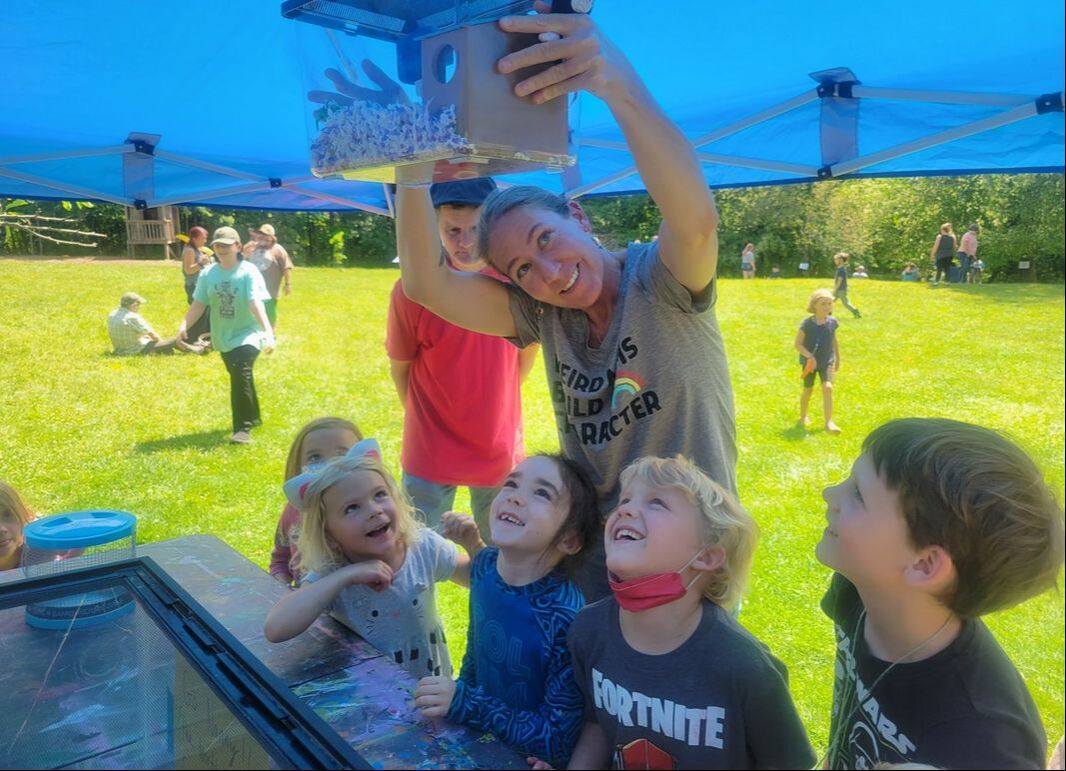Learning Philosophy
Constructing Knowledge in a Child-Centered Environment
For humans to maintain a lifelong interest in learning, three conditions must be present: a sense of wonder, a desire to experience, and an excitement over discovery. Child-centered environments like ours foster and preserve these qualities in all learners and invite children to explore, experiment, take risks, and solve problems. Our progressive philosophy values children’s questions and interests, their playful spirits and individual discoveries, and the knowledge and experiences they bring to school.
Our teachers create developmentally-appropriate, concept-rich classrooms providing materials, tools, opportunities and guidance while encouraging children to make choices, to interact with their environment, to reflect on their learning, and to work with other children. Meaningful classroom experiences build interest, motivation, and the love of learning. Exploration is encouraged and valued as a vital context in which learning takes place; through exploration, children are able to create, to take risks, to reflect, to be autonomous, and to actively engage their minds and bodies. Such experiences in childhood provide the tools that sustain us throughout our lifetime, regardless of where and when we live.
Child Development in the Classroom
Teachers at BMS work with the students’ interests and stages of development to create engaging, meaningful, interdisciplinary projects which teach the skills and content in each subject area in an integrated manner, rather than in isolation. Particular care is taken in supporting the stages of cognitive, social, and emotional development through which children progress, which vary individually and as a group. At BMS, learning does not take place in a linear fashion; rather, learning takes place by having an opportunity to experience and reflect on new ideas and concepts multiple times and in different ways. Therefore, while encompassing national standards, our curriculum also reflects and takes into consideration the needs of the specific students in a given class, and their interests and passions at a given time.
Multi-Age Structure
The primary goal of multi-age grouping is to create an environment at school that allows for the healthy development of all students because children grow, learn, and develop at varying rates, not simply as a result of their age. The multi-age classroom provides time and support for each individual to develop, honoring differences in learning styles and rates. Where an individual is along his/her own learning continuum and as an integral part of the group, determines the focus of instruction for that child.
There are many additional benefits to multi-aged grouping. In this model, students and teachers work together over a period of years, encouraging a strong sense of community and commitment to one another. Teachers have the opportunity to gain a deeper understanding of each student's academic, social, emotional, and physical strengths and can structure lessons to best meet each student's needs. Parents and teachers have more time to become partners in supporting children. Students in multi-age classrooms are encouraged to teach and learn from one another; younger children benefit from older students who model more sophisticated approaches to learning while older children benefit from their roles as mentors. The child-centered structure of the multi-age classroom encourages children to take responsibility for in their own learning as enthusiastic participants, not just passive recipients.
Parent Involvement
Blue Mountain School recognizes that children are most at peace and able to learn when they are supported by all of the important people in their lives. We also honor the clear influence that home and school have on each other. As a result, we encourage family participation in the classroom, at our frequent family and community events, and in our family and staff retreats.
Assessment and Grades
Our school uses several different tools to assess a child’s academic, social, and emotional growth. We do not engage in standardized testing. Our students and teachers work together to complete a portfolio of the students’ work for review several times throughout the year. The portfolio is used in place of grades.


